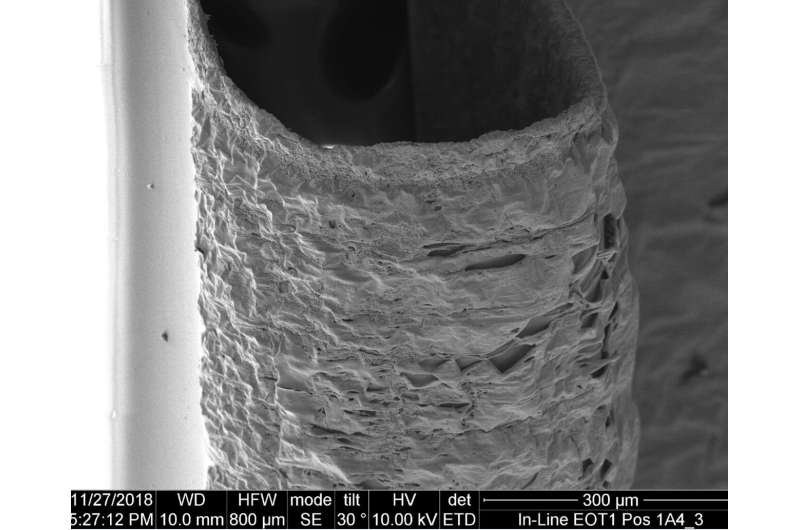In the same way, the Juice team needed to know that susceptible materials could withstand the atomic oxygen the spacecraft would encounter in the mission's Ganymede elliptical orbit phase."
This test focused on silver interconnects used in the Juice solar arrays—connectors just a few tenths of a thousandth of a millimeter thick—looking into their susceptibility to atomic oxygen exposure combined with low-temperature 'thermal cycling'—repeated rapid temperature shifts. Of particular concern was the risk of microcracks forming in the silver, which might lead to failure.
"Silver is one of the very few metals susceptible to atomic oxygen erosion," comments Sam Verstaen of ESA's Juice team. "But silver was also the preferred metal for these Juice interconnects in order to maintain the spacecraft's magnetic cleanliness which is essential for the optimal operation of our suite of in-situ science instruments."
Testing was performed in the Low Earth Orbit Facility, LEOX, of ESA's Materials and Electrical Components Laboratory, part of the Agency's ESTEC technical center in the Netherlands.
A one-of-a-kind facility in Europe, LEOX uses a laser to dissociate molecular oxygen into atomic oxygen at energy levels that are equivalent to orbital speed—7.8 km/s—to simulate the space environment as closely as possible.
"The general effects of atomic oxygen exposure could be seen clearly on the sample interconnectors," adds ESA materials engineer Gabor Milassin, who performed the testing. "However it was demonstrated that this was only a surface effect, and no major cracks were observed which could compromise the functionality of the interconnects—the silver interconnects could be given a clean bill of health to go to Ganymede."
The lab also worked on numerous other Juice-related tests, including evaluating multi-layer insulation, adhesive tapes and thermal control coatings. Juice presented particular problems in materials terms because the mission will pass from the high-temperature environment of a Venus flyby, where temperatures will rise above 200°C, down to a much colder environment around Jupiter.
Provided by European Space Agency



